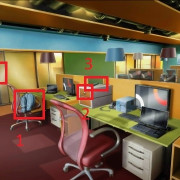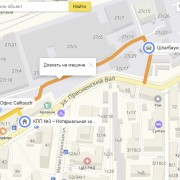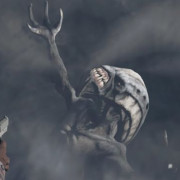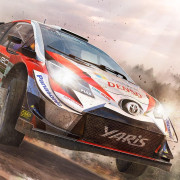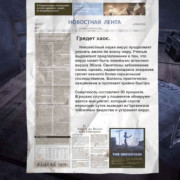Mercenaries (age of empires iii)
Содержание:
- History[]
- History[]
- Trivia[]
- Обновить драйвера видеокарты, скачать драйвера для Age of Empires 3
- In-game dialogue[]
- In-game dialogue[]
- Trivia[]
- Civilization differences[]
- The Asian Dynasties[]
- Простое решение тормозов в AoE3
- Barracks/Blockhouse[]
- Overview[]
- Дополнения[]
- Features[]
- Home City Cards[]
- Home City Cards[]
- Home City Cards[]
- The WarChiefs[]
- Age of Empires 3: подробнее об игре
- History[]
- History[]
History[]
| “ | The most densely populated region of the New World in 1492 was Mesoamerica, where North and Central America meet in modern Mexico and the Yucatan Peninsula. The people living here were called the Aztecs (also Mexica or Tenochca); they built an amazing civilization centered on their great capital city of Tenochtitlan (modern Mexico City). This was one of the largest cities in the world (with an estimated population of 200,000), and arguably more beautiful and cleaner than any contemporary capital in Europe.The Aztecs were just one of several tribes in the area, but had risen to prominence due to their ferocity in battle and adept diplomacy. Their soldiers wielded weapons of wood and stone, and they often sought prisoners to be sacrificed in religious ceremonies. Their society depended on sophisticated agricultural techniques; from them the world learned of foodstuffs including tomatoes, corn, cocoa, and chili peppers. They were handicapped by the lack of large domesticated animals (they had no horse or ox), and the use of the wheel only in toys. Everything to be moved was carried by human porters.Despite their large population and fighting prowess, the Aztecs fell relatively quickly to the determined Spanish conquistadores under Cortez. This was due in large part to the epidemics the Europeans brought ashore. By some estimates the Aztec population of 12 million people in 1520 had fallen to one million by 1600. The Spanish also allied with the Aztecs’ enemies to increase the size of their armies, and had the advantages of steel and gunpowder weapons. | ” |
History[]
| “ | France began the age of exploration as one of the more powerful nations in Europe economically, militarily, and geographically. Initially they trailed the Spanish and Portuguese in the quest for overseas trade and empire, but made significant progress in the seventeenth and eighteenth centuries. They were exploring and attempting to settle North America before the British, attracted by the fishing off Newfoundland, fur trading, and their search for a northwest passage around the Americas to the Pacific Ocean and Asia.A sixteenth century settlement in Florida was wiped out by the Spanish. Several attempts to settle in Nova Scotia and along the St. Lawrence River finally resulted in a permanent settlement in Quebec. From there intrepid explorers, including Champlain, Marquette, and many others, worked their way through the Great Lakes and down the Mississippi to its mouth. They established better relations with the Native Americans than any other European nation, mainly because they encouraged fur trading and were less interested in permanent settlement. French trappers and traders came to America in relatively small numbers to make a fortune in furs, and then returned home. They eventually built a string of trading posts and forts along the interior trade route at New Orleans, St. Louis, Mackinac Island, Detroit, and Fort Duquesne (modern Pittsburgh).French involvement in Europe, India, and the Caribbean meant that colonizing efforts in Canada were not strongly or systematically supported. The efforts of the smaller French population to keep the rapidly growing British bottled up along the Atlantic seaboard could not be sustained. When war came in the eighteenth century, Canada was lost in battle and traded at the negotiation table for some spice islands in Indonesia. The French retained their control of the Mississippi and Missouri River watersheds until the early nineteenth century, when Napoleon sold France’s vast holdings to the fledgling United States to support his wars in Europe. | ” |
Trivia[]
- Although the unit description says that the Hussar a light cavalry unit, it is classified as a heavy cavalry.
- British Royal Guard/Consulate Hussars are named after the Life Guards.
- Ottoman Royal Guard/Consulate Hussars are named after the Bostancı
Before the Definitive Edition, they are named after the literal translation of Bostancı, Gardener.
.
- German Hussars are named after the Polish Hussars, who are notable for their huge wing ornament (though their in-game model are not changed to reflect this).
- Russian Consulate Hussars are named after Bashkir battalions that served in the Russian army, .
- Chilean Hussars of Death are inspired by Death Head Hussars, which was a Prussian unique unit featured in the Napoleonic Era
One of the developers of the mod worked on the Definitive Edition.
mod.
- The United States’ ability to access Magyar Hussars through the «Kovat’s Legion» Home City Card is a reference to Michael Kovats de Fabriczy
The American Magyar Hussars use the in-game dialogue of military Magyar units from Age of Empires II HD: The Forgotten, but with the pitch raised slightly.
, a Hungarian nobleman who fought for the Continental Army during the American Revolutionary War and are known as the one of the founding fathers of U.S. cavalry units.
Обновить драйвера видеокарты, скачать драйвера для Age of Empires 3
Вне зависимости от того, какая видеокарта стоит в системном блоке, ее драйвера нужно поддерживать в актуальном состоянии. Поэтому перед запуском Age of Empires 3 следует зайти на сайт производителя и проверить, не вышли ли новые драйвера:
- Скачать драйвер для видеокарт от Nvidia;
- Скачать драйвер для видеокарт от AMD.
После установки драйвера следует перезагрузить компьютер, чтобы исключить возможность сбоев. Также стоит учитывать, что для многих старых видеокарт новые драйверы уже не выходят.
Для некоторых игр производители видеокарт выпускают специально оптимизированные драйвера. Поищите таковые в разделе новостей о Age of Empires 3 — обычно мы про них пишем. Также можно посмотреть на сайте производителей видеокарт.

In-game dialogue[]
- Main article: Aztecs’ dialogue lines
Aztec units speak an unknown variant of Nahuatl, since the in-game dialogues are neither classical nor modern Nahuatl or possibly a mix of Yucatec, Kaqchikel, Kʼicheʼ, Mam and other languages. For example, lumberjacks say ajsi, which means «wood worker» in some Mayan languages like Yucatec (si means «wood», aj- is a prefix denoting profession). Builders say ajtsaq, which means «bricklayer» in several Mayan languages including Kaqchikel.
The spoken lines themselves are also .Note: Spelling speculative
General
- Select
- Oc? — Yes?
- Bant’ ney
- Comantsi
- Move
- Cuh — I’m going(?)
- Oc — Yes
- Ic com
- Attack
- Zebiok! — Attack!
- Zhunqey! — Attack!
- Oc! — Yes!
Villager
- Build Ajtsaq — Bricklayer
- Farm Tsag onan
- Gather Coin Tsag onan
- Gather Fruit
- Female Gather Meat Asku/ageku — Hunter
- Male Gather Meat Asku/ageku — Hunter
- Gather Wood Ajsi — Wood worker
In-game dialogue[]
Indian units (including native warriors and mercenaries) speak Modern Hindi.
General
- आदेश [Ādeś] (command)
- तैयार [Taiyār] (ready)
- हाँ? [Hān?] (yes?)
- हैलो? [Hello?] (hello?)
- मैं करूँगा [Main karunga] (I will do it – masculine)
- मैं करुँगी [Main karungī] (I will do it – feminine)
- मैं जा रहा हूँ [Main jā rahā hūn] (I am going – masculine)
- मैं जा रही हूँ [Main jā rahī hūn] (I am going – feminine)
- हाँ [Hān] (yes)
- सही [Sahī] (right)
- युद्ध करने के लिए [Yuddh karne ke liye] (to do war – To war/To battle)
- हमला [Hamalā] (attack!)
- हाँ! [Hāṃ!] (yes!)
Villager
- Female Build Makān banāne wālā (मकान बनाने वाला) — Builder
- Male Build Makān banāne wālā (मकान बनाने वाला) — Builder
- Female Farm Kisān (किसान) — Farmer
- Male Farm Kisān (किसान) — Farmer
- Female Gather Coin Kamāne wālā (कमाने वाला) — Earner
- Male Gather Coin Kamāne wālā (कमाने वाला) — Earner
- Female Gather Fruit Khurāk ḍhūndne wālā (खुराक ढूंढने वाला) — Forager
- Male Gather Fruit Khurāk ḍhūndne wālā (खुराक ढूंढने वाला) — Forager
- Female Gather Meat Śikārī (शिकारी) — Hunter
- Male Gather Meat Śikārī (शिकारी) — Hunter
- Female Gather Wood Lakaṛa-hārā (लकड़हारा) — Lumberjack
- Male Gather Wood Lakaṛa-hārā (लकड़हारा) — Lumberjack
- Female Repair (not used in the game)
- Male Repair (not used in the game)
Monk
- Disabled Svargagāmi (स्वर्गगामी) — Going to heaven
- Revived Śarīr mar saktā hai par ātma amar hai (शरीर मर सकता है पर आत्मा अमर है) — The body can die but the soul is immortal
Trivia[]
- The Halberdier’s function and its availability in the third age is similar to the Hoplite and Phalanx from the original Age of Empires.
- Despite being a weapon of German origin that was also used by the British and Spanish, none of them use it for balancing reasons.
- Dutch Royal Guard Halberdiers’ name, Stadswacht
Before the Definitive Edition, they are named Nassauer, which refers to Maurice of Nassau who was the first to utilize linear infantry tactics on a large scale in Europe (confirmed by the Royal Guard upgrade, which is named Nassau’s Linear Tactics). Contrary to the in-game upgrade, however, the tactic was introduced to Dutch musketeers rather than melee troops.
, translates to «City Guard».
Civilization differences[]
- As seen above, the Dutch can upgrade Halberdiers to Royal Guard and Imperial Guard.
- The Russians train Halberdiers in groups of four at the Blockhouse for 75% of the price but with 20% less hit points and attack.
- The Spanish cannot train Halberdiers but can ship 13 Guard Halberdiers through Royal Alabarderos
Similarly, the Swedes can ship 16 Veteran Halberdiers through Gustavian Guards and turn all Pikemen into Halberdiers through the «Dalcarlian Rebellion» Home City Card.
.
- John Black’s Mercenaries can only upgrade Halberdiers to Guard.
- The Haudenosaunee can ship up to 31 Halberdiers through the «Renegade Dutch» cards. Most probably, initially this card would also be available for the British, Ottomans, Germans, and Lakota, as game files contain entries of these civilizations’ Halberdiers using the , but this was cut out of the final version of the game.
The Asian Dynasties[]
All military units of The Asian Dynasties civilizations are unique, with the exceptions of Monitors and all Indian ships. Each Asian civilization builds Consulates to acquire alliance army shipments and bonuses, in addition to Wonders for advancing in Age.
Chinese
- Civilization bonus: Have Villages instead of Houses which supports twice the population than the latter, and has migration cards that allow them to spawn one Villager at each Town Center and Village. Trains infantry and cavalry in groups called banner army. Only get one Monk at the start of the game, along with a Disciple.
- Home City: Beijing
- See also: Chinese Home City Cards
Indians
- Civilization bonus: Villagers cannot kill livestock for food, but can build unique buildings called Sacred Field which livestock can be stationed to generate XP. There are no Villager cards, but they receive free Villagers with every Home City shipments. All Villagers trained from the Town Center cost wood instead of food.
- Home City: Delhi
- See also: Indian Home City Cards
Japanese
- Civilization bonus: Have Shrines, which replace normal Houses and generate resources. Villagers cannot hunt animals for food, but can build Shrines next to wild animals to increase the resource trickle rate. As a special advantage, most cards in the Japanese Home City may be sent twice.
- Home City: Edo
- See also: Japanese Home City Cards
Простое решение тормозов в AoE3
- Скачайте и запустите всемирно известный CCleaner (скачать по прямой ссылке) — это программа, которая очистит ваш компьютер от ненужного мусора, в результате чего система станет работать быстрее после первой же перезагрузки;
- Обновите все драйверы в системе с помощью программы Driver Updater (скачать по прямой ссылке) — она просканирует ваш компьютер и обновит все драйверы до актуальной версии за 5 минут;
- Установите программу WinOptimizer (скачать по прямой ссылке) и включите в ней игровой режим, который завершит бесполезные фоновые процессы во время запуска игр и повысит производительность в игре.
Barracks/Blockhouse[]
The Barracks and the Blockhouse train and upgrade . The Blockhouse is only available to the Russians.
- Ashigaru Musketeer (Japanese only)
- Carolean (Swedes only)
- Cassador (Portuguese only)
- Crossbowman
- Doppelsoldner (Germans only)
- Gurkha (Indians only)
- Halberdier
- Janissary (Ottomans only)
- Longbowman (British only)
- Musketeer
- Pikeman
- Rajput (Indians only)
- Regular (United States only)
- Rodelero (Spanish only)
- Samurai (Japanese only)
- Sepoy (Indians only)
- Sharpshooter (United States only)
- Skirmisher
- State Militia (United States only)
- Strelet (Russians only)
- Yumi Archer (Japanese only)
Overview[]
The Mameluke boasts some of the highest hit points for a cavalry unit (1,450 in any age, without upgrades). This is far greater than even the two other non-Lancer hand cavalry mercenaries (namely, Stradiots and Hackapells), though their attack is lower than both (around that of a Hussar). Naturally, this excessive durability allows them to best even anti-cavalry units, such as Rodeleros and Pikemen. With all hit point improvement upgrades (Comanche) and cards (Indian and Russian allies), the German Egyptian Mameluke is the unit and/or melee cavalry with the highest hit points, 2,465.
Besides training them as random mercenaries and Home City shipments, Mamelukes can be trained by the Ottomans through Mercenary Contractor politician, British or Ottomans by the Egyptian revolution or by the Ethiopian-Arab alliance.
Дополнения[]
К игре выпущено два дополнения:
Основная статья: Age of Empires III: The WarChiefs
Первое дополнение The WarChiefs добавляет в игру три нации коренных североамериканцев — ирокезов, сиу и ацтеков. Появляются новые юниты: колониальная милиция — пехота колониальной армии, одна из которой тренируется в боевых хижинах, а другая даётся в начале игры и отправить из родного города её невозможно. Боевая хижина — такое же здание, как и европейские аванпосты, только создают индейских воинов и стреляют по врагам стрелами. В европейских державах поселенцы могут строить салуны — специальное здание, где тренируются наёмники и бандиты. У туземцев вместо поселенцев крестьяне. Также они могут строить окопы — источник различных улучшений деревни. Для этого надо направить селян танцевать в окоп. Также добавлены новые одиночные карты и приёмы ведения игры. Кампании дополнения описывают жизни двух других членов семьи Блэк: Натаниэля и Чэйтона, отца и сына Амелии, соответственно. С Кругом их истории никак не связаны. Натаниэль участвовал в Революционной войне, а Чэйтон боролся бок о бок с сиу против американской армии.
Основная статья: Age of Empires III: The Asian Dynasties
Features[]
- Settlers cost coin instead of food and have a lower train limit (50), but gather from mines 15% faster
- Build Banks to automatically produce coin
- Starts with an Envoy
- Royal Guard units: Halberdier (Stadswacht), Ruyter (Carabineer)
Unique units
- Envoy: Dutch reconnaissance unit with a good line of sight but weak attack.
- Ruyter: Ranged cavalry armed with pistols. Good against cavalry and artillery.
- Fluyt: Slow, powerful ship resistant to building fire that can train units.
Revolutions
- George Washington and José Bonifácio de Andrada e Silva (The WarChiefs and The Asian Dynasties).
- Brazil, Indonesia, South Africa, United States (since the Definitive Edition).
Home City Cards[]
| Click for a list of Home City Cards related to the Hussar | |||||||||||||||||||||||||||||||||||||||||||||||||||||||||||||||||||||||||||||||||||||||||||||||||||||||||||||||||||||||||||||||||
|---|---|---|---|---|---|---|---|---|---|---|---|---|---|---|---|---|---|---|---|---|---|---|---|---|---|---|---|---|---|---|---|---|---|---|---|---|---|---|---|---|---|---|---|---|---|---|---|---|---|---|---|---|---|---|---|---|---|---|---|---|---|---|---|---|---|---|---|---|---|---|---|---|---|---|---|---|---|---|---|---|---|---|---|---|---|---|---|---|---|---|---|---|---|---|---|---|---|---|---|---|---|---|---|---|---|---|---|---|---|---|---|---|---|---|---|---|---|---|---|---|---|---|---|---|---|---|---|---|---|
Europeans
|
| Card | Description | Age | HC level |
|---|---|---|---|
| 3 Hussars | Ships 3 Hussars | 1 | |
| 4 Hussars | Ships 4 Hussars | 1 | |
| 7 Hussars | Ships 7 Hussars | 10 | |
| 5 Hussars | Ships 5 Hussars | 10 | |
| 8 Hussars | Ships 8 Hussars | 25 | |
| Cavalry Combat | get +15% hit points and attack | 10 | |
| Riding School | Cavalry train time -40% | 10 |
- «3 Hussars» is available to Dutch, French, Ottomans, and Swedes.
- «4 Hussars» is not available to the Portuguese.
- «7 Hussars» is not available to the Portuguese and Swedes.
- «5 Hussars» is not available to Dutch, French and Portuguese.
- «8 Hussars» is available to British, Ottomans and Swedes.
- «Cavalry Combat» that affects all is available to Dutch, Ottomans and Russians; British «Cavalry Combat» that only affects Hussars and Dragoons are listed separately.
British
| Card | Description | Age | HC level |
|---|---|---|---|
| Cavalry Damage | Hussars and Dragoons get +15% attack | 10 | |
| Cavalry Hitpoints | Hussars and Dragoons get +15% hit points | 10 | |
| Cavalry Combat | Hussars and Dragoons get +15% hit points and attack | 25 |
Germans
| Card | Description | Age | HC level |
|---|---|---|---|
| TEAM Cavalry Attack | Heavy cavalry, , and shock infantry get +15% attack | 10 | |
| Polish Winged Hussars | Ships 10 Winged Hussars (Guard Hussars) | 25 | |
| Spanish Riding School | Cavalry get +10% speed +4 Uhlans | 25 |
Hungary
| Card | Description |
|---|---|
| Magyar Hussars | Each Outpost/Blockhouse spawns a Magyar Hussar (Hussar with +100% hit points); +1 Outpost/Blockhouse Wagon; Outpost/Blockhouse build limit +1 |
Incas
| Card | Description | Age |
|---|---|---|
| Tupac Rebellion | Turns Villagers into Revolutionaries, Plumed Spearmen into Guard Musketeers, Chimu Runners into Veteran Hussars, Jungle Bowmen into Guard Skirmishers, Bolas Warriors into Veteran Dragoons, Huaracas into Guard Grenadiers, and Macemen into Light Cannons; costs 2,000 food, 2,000 wood, 2,000 coin |
Portuguese
| Card | Description | Age | HC level |
|---|---|---|---|
| Dragoon Combat | Dragoons get +20% hit points and attack; Hussars get +15% hit points and attack | 10 |
Spanish
| Card | Description | Age | HC level |
|---|---|---|---|
| Hand Cavalry Hitpoints | Hussars and Lancers get +15% hit points | 10 | |
| Hand Cavalry Attack | Hussars and Lancers get +15% attack | 10 | |
| Hand Cavalry Combat | Hussars and Lancers get +15% hit points and attack | 25 | |
| TEAM Inquisition | All units get +10 LOS | 10 |
Swedes
| Card | Description | Age |
|---|---|---|
| Hand Infantry/Hand Cavalry Attack | Melee infantry and melee cavalry get +15% attack | |
| Hand Infantry/Hand Cavalry Hitpoints | Melee infantry and melee cavalry get +15% hit points | |
| Finnhorses | Hussars and Hakkapelits get +25% hit points | |
| March of the Hakkapelits | Turns Hussars into Hakkapelits; Hakkapelits can be trained in the Commerce Age | |
| Trample Tactics | Hussars and Hakkapelits get +15% hit points and move and attack 50% faster in |
United States
| Card | Description | Age |
|---|---|---|
| Patriotism | State Militia train time -45%; Regular and Sharpshooter train time -35%; Hussar and Carbine Cavalry train time -25% | |
| Kovat’s Legion | Ships 9 Magyar Hussars; Magyar Hussars can be trained at Forts; costs 1,000 food, 1,000 wood |
Home City Cards[]
| Click for a list of Home City Cards related to the Crossbowman | ||||||||||||||||||||||||||||||||||||||||||||||||
|---|---|---|---|---|---|---|---|---|---|---|---|---|---|---|---|---|---|---|---|---|---|---|---|---|---|---|---|---|---|---|---|---|---|---|---|---|---|---|---|---|---|---|---|---|---|---|---|---|
Europeans
|
| Card | Description | Age | HC level |
|---|---|---|---|
| 8 Crossbowmen | Ships 8 Crossbowmen (also +2 Uhlans for the Germans) | 1 | |
| 10 Crossbowmen | Ships 10 Crossbowmen (also +3 Uhlans for the Germans) | 1 | |
| 24 Crossbowmen | Ships 24 Crossbowmen | 10 | |
| Long-range Infantry Hitpoints | Crossbowmen and Skirmishers get +15% hit points | 10 | |
| Fencing School | Infantry train time -40% | 10 |
- «8 Crossbowmen» and «10 Crossbowmen» are not available to the Spanish.
- «Long-range Infantry Hitpoints» is available to French and Germans (in the Industrial Age and at a level 1 Home City, also ships 4 Uhlans).
- «24 Crossbowmen» is not available to Germans and Portuguese.
French
| Card | Description | Age | HC level |
|---|---|---|---|
| TEAM Ranged Infantry Attack | get +15% attack | 10 | |
| Tirailleurs | Turns Crossbowmen into Skirmishers | 40 |
Spanish
| Card | Description | Age | HC level |
|---|---|---|---|
| TEAM Archaic Soldier Training | Pikeman, Plumed Spearman, Crossbowman, Longbowman, Otontin Slinger, Aenna, Cetan Bowman, Yumi Archer, Jungle Bowman, Fulani Archer, and Desert Archer train time -50%; Old Han Army, Standard Army, and Ming Army train time -25% | 10 | |
| TEAM Inquisition | All units get +10 LOS | 10 |
Home City Cards[]
| Click for a list of Home City Cards related to the Cavalry Archer | ||||||||||||||||||||||||||||||||||||||||||||||||
|---|---|---|---|---|---|---|---|---|---|---|---|---|---|---|---|---|---|---|---|---|---|---|---|---|---|---|---|---|---|---|---|---|---|---|---|---|---|---|---|---|---|---|---|---|---|---|---|---|
Europeans
|
| Card | Description | Age | HC level |
|---|---|---|---|
| 5 Cavalry Archers | Ships 5 Cavalry Archers | 1 | |
| 8 Cavalry Archers | Ships 8 Cavalry Archers | 1 | |
| 9 Cavalry Archers | Ships 9 Cavalry Archers | 10 | |
| Cavalry Combat | get +15% hit points and attack | 10 | |
| Riding School | Cavalry train time -40% | 10 |
- Since the Cavalry Archer is only available to Ottomans and Russians, all of the cards shown above are only relevant to them.
Portuguese
| Card | Description | Age | HC level |
|---|---|---|---|
| TEAM Early Dragoons | Dragoons, Cavalry Archers, Ruyters, Musket Riders, Rifle Riders, Yabusame, and Carbine Cavalry can be trained in the Commerce Age; Eagle Runner Knight, Zamburak, Ming Army, Bolas Warrior, and Black Rider train time -15%; Mongolian Army train time -7% | 1 |
Romania
| Card | Description |
|---|---|
| Wallachian Horse Archers | Each Outpost/Blockhouse spawns a Wallachian Horse Archer (Cavalry Archer with +33% ROF and +10% speed but -33% hit points); +1 Outpost/Blockhouse Wagon; Outpost/Blockhouse build limit +1 |
Russians
| Card | Description | Age | HC level |
|---|---|---|---|
| 7 Cavalry Archers | Ships 7 Cavalry Archers | 10 | |
| TEAM Cavalry Scouts | and shock infantry get +10% hit points and +4 LOS | 1 |
The WarChiefs[]
All military units of The WarChiefs civilizations are unique, with the exceptions of Canoes and War Canoes.
Aztecs
- War Chief bonus: Doubles experience gained in combat by nearby units.
- Civilization bonus: Have Warrior Priests that can heal or count as two people at the Community Plaza. Start with one Warrior Priest. Except ordinary War Hut, Nobles’ Hut also acts as a Blockhouse, but with a longer range.
- Home City: Tenochtitlan
- See also: Aztec Home City Cards
Haudenosaunee
- War Chief bonus: Boosts hit points of nearby units.
- Civilization bonus: Have Travois, and start with one in the beginning of the game that can build most buildings for free. The Haudenosaunee also have a unique Founder Ceremony in the Community Plaza which spawns Travois.
- War Council: Caughnawaga
- See also: Haudenosaunee Home City Cards
Lakota
- War Chief bonus: Boosts speed of nearby units.
- Civilization bonus: Start with 200 population capacity in the beginning of game. Have unique Teepees, which the player can only build up to ten (exception when a special card is sent) to provide a little health bonus to nearby friendly units.
- War Council: Hunkpapa
- See also: Lakota Home City Cards
Age of Empires 3: подробнее об игре
Age of Empires 3 представляет собой третью игру знаменитой серии стратегий. Захватывающий мир, удивительные сражения и захватывающий геймплей — одни из немногих качеств, что так полюбились ценителям игр серии Age of Empires. Как и предыдущие игры серии, с сюжетной точки зрения Age of Empires 3 повествует нам дальнейшие приключения уже успевшей стать родной для игроков династии Блэк. Теперь главному герою придётся проявить себе в Новом Свете, на голову персонажа свалятся множество самых различных проблем и задач, от решения которых будет зависеть очень многое.
В этот раз разработчики предоставили нашему вниманию целых три сюжетных однопользовательских линий, помимо всем привычного онлайн-режима, благодаря которому игра и стала столь популярной. Сама игра Age of Empires 3 представляет собой жанр «стратегии в реальном времени», который позволяет играть как одному, так и совместно с друзьями или просто рандомными игроками в Age of Empires 3. Достаточно неплохая и в своём роде уникальная для такого типа игр графика также станет приятным бонусом ко всем прочим плюсам игры.
В результате игра Age of Empires 3 является идеальным сочетанием хороший графики, увлекательного сюжета, захватывающих дух сражений и просто старой доброй атмосферы стратегий в реальном времени. Она придётся по нраву как ценителям игр данной серии, так и тем, кто только собирается окунуться в удивительный и увлекательный мир игр серии Age of Empires, существующий уже не первое десятилетие и продолжающий пользоваться заслуженной известностью.
History[]
| “ | Holland in 1500 was a small European nation, but extremely energetic, practical, and progressive, with a strong emphasis on trade. Particularly in the northern provinces, the Dutch embraced Protestant Christianity during the sixteenth century, supplanting Catholicism. They were aggressive and dynamic traders, well-positioned to transport goods to and from the Baltic and North Atlantic, and the interior of Europe up the Rhine River. They built efficient ships that carried large cargoes with small crews. Very limited in land, they developed an intense agriculture and began reclaiming lowlands from the sea.By accident of marriage and inheritance, control of the now largely Protestant Holland shifted to Catholic Spain in the mid-sixteenth century, and Spanish kings sought, in turn, to supplant Protestantism within their realm. This led to a revolt against Spain. Although at a great disadvantage in overall wealth and power, the Dutch proved a tough opponent and drew allies to their side. By 1609 Holland was virtually independent.In the era of colonial expansion by great empires, the Dutch pursued business opportunities. They were soon engaged in the trade with the Americas, despite Spanish attempts to exclude non-allies. The efficiency of their ships made them attractive as low-cost carriers. They built a business carrying and processing sugar and other goods out of Portuguese Brazil. When the Spanish allied with Portugal and closed the Portuguese ports to the Dutch, the Dutch seized several islands, including Aruba and Curaçao.In 1610 Henry Hudson explored the North American coast and rediscovered both the river now named after him and the great harbor of modern-day New York City. After several trading voyages to the area seeking furs, the Dutch planted a small trading outpost up the river near Albany in 1614 and later a more permanent settlement on Manhattan Island. The relatively few colonists were more interested in trade profits than in establishing a lasting and well-defended colony. New Amsterdam fell easily to a British fleet commanded by the Duke of York in 1664. The Dutch regained it briefly in 1673, but ceded it permanently to Britain in 1674.The Dutch made their biggest mark in the East Indies. Following in the wake of the Portuguese around Africa in the early 1600s, agents of the Dutch East India Company took over much of the East India trade, together with England. | ” |
History[]
| “ | The Sengoku, or Warring States period, lasted roughly from 1478 to 1605 and was a time of tremendous social upheaval and political strife in Japan, defined by an almost endless state of war.The centralized government of the reigning Ashikaga shogunate had begun to lose the loyalty of many daimyo, or feudal lords, across Japan. Individual provinces were beginning to turn inwards and busy themselves with local matters. This was especially true of those domains far from Kyoto, the center of power.Many factors contributed to the gradual fragmentation of the shogunate. Trade with China was growing rapidly, developing the Japanese economy and boosting the importance of money to local economies. Commercial cities began to appear across the countryside, and a great desire for local autonomy developed, touching all classes of the social hierarchy. Soon, frustrated over rising taxes and the damage done by famines and earthquakes, peasants began to revolt.As chaos began to take hold of the rural villages, unrest broke out in Kyoto, where a dispute over shogunal succession triggered the Onin War (1467–1477). The Hosokawa family and its allies clashed with the Yamana family over the right to wield Japan’s cetral authority. This conflict raged for 11 years, further weakening the role of the shogunate, and it eventually spread out to the waiting powder keg that had become the surrounding provinces.Regional daimyo suddenly rose up to take control where the central authority had none. During this time, notable clans such as the Takeda and the Imagawa were able to greatly expand their spheres of influence. This was not true of all local lords, however, as many were overtaken by their own subordinates and replaced. This was known as gekokujo, literally translated to mean “the underling conquers the overlord.”A century passed and the feudal warring continued, even as a possibility for peace grew on the horizon. Oda Nobunaga, who had emerged from obscurity to seize power over much of central Japan, seemed poised to unite the scrabbling clans into an alliance; but before he could, Nobunaga fell victim to the treachery of one of his own generals in 1582. This left the path to power open for whoever had the ambitions to take it.One of Nobunaga’s most trusted underlings, a general and former foot soldier named Toyotomi Hideyoshi, stepped in where his predecessor had left off and continued the work to unify the feuding families. Hideyoshi could never become a true shogun as he was of common birth, but he did consolidate enough power to be named an Imperial Regent by the Emperor of Japan.After several ill-fated invasions of Korea, Hideyoshi died in 1598 without leaving a capable successor to his dynasty. Again, the nation teetered precariously on the edge of chaos.It was then that the powerful daimyo of Mikawa province, Tokugawa Ieyasu, chose to make his move, one he had been planning for years. | ” |
